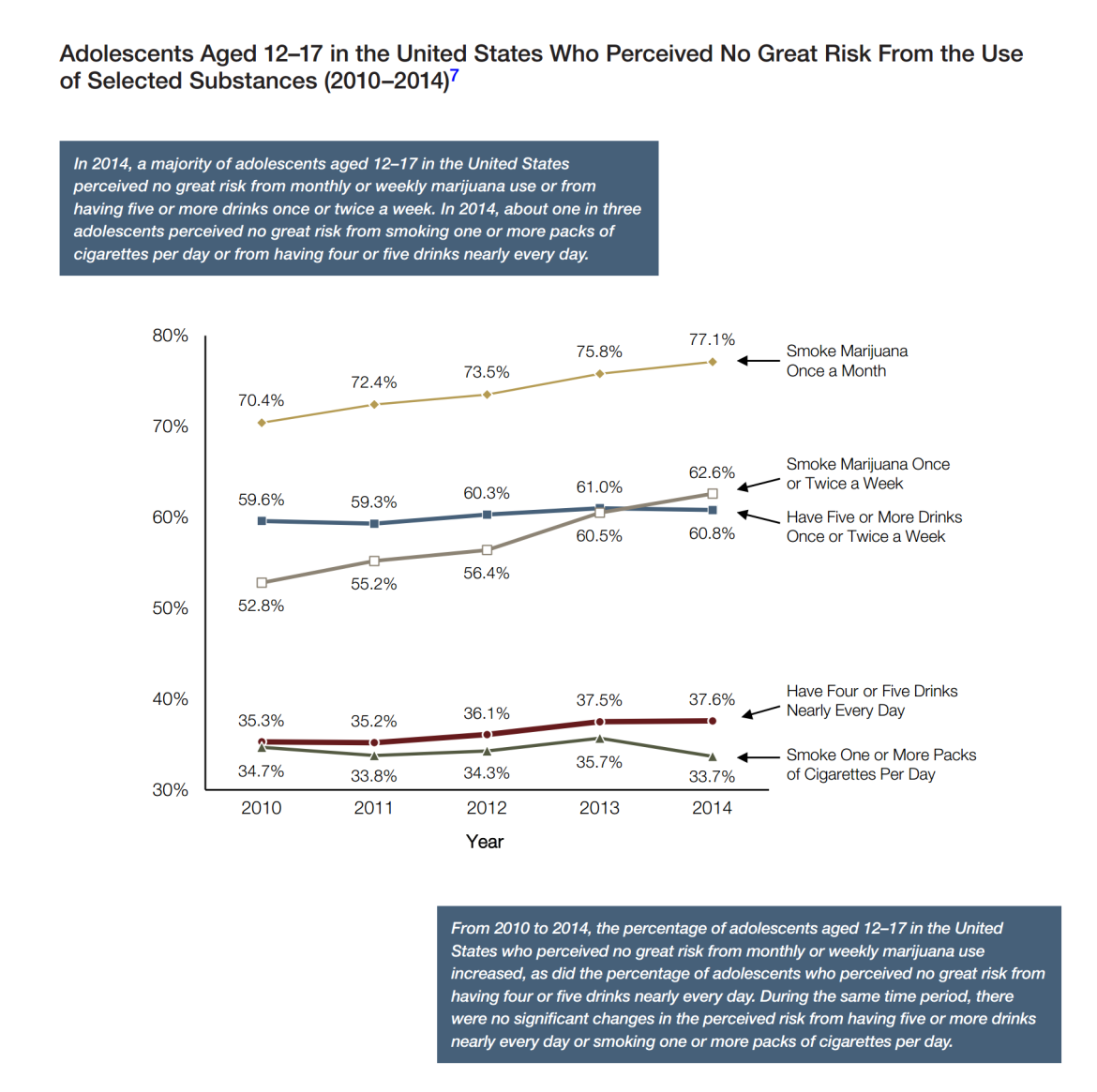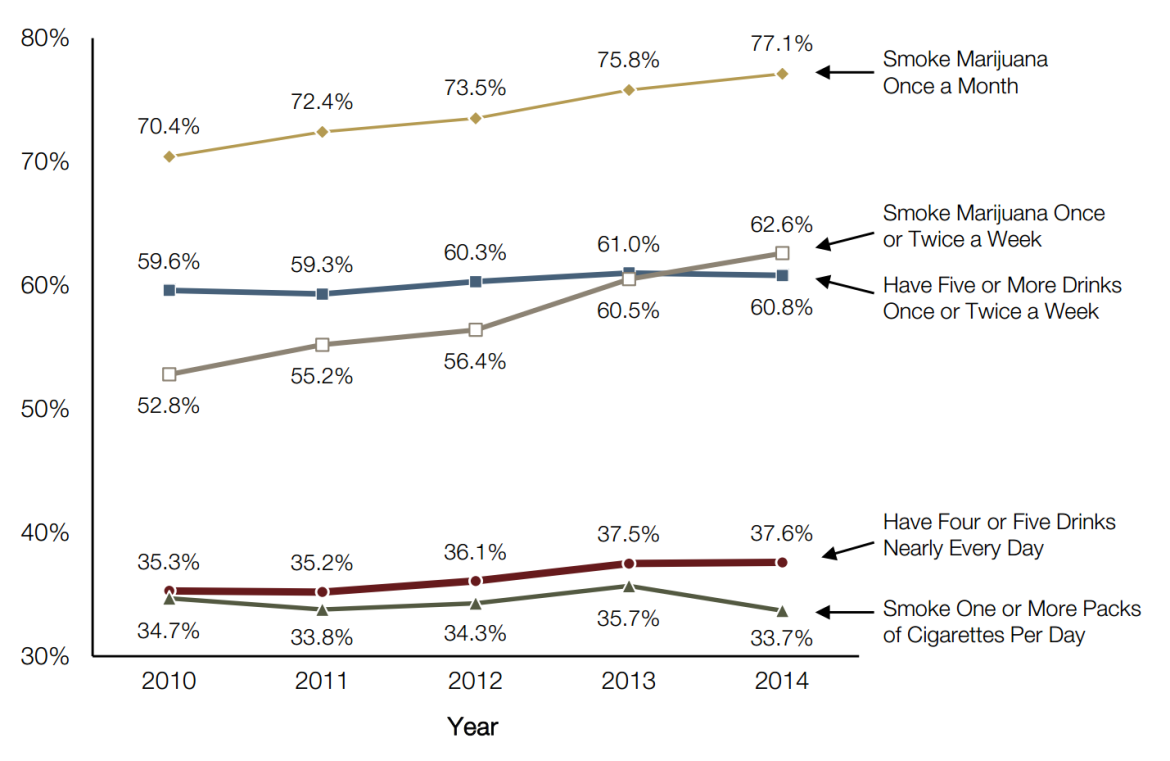
Source: SAMSA
.
WASHINGTON — The latest treasure trove of data for public health researchers and policymakers who study substance use and mental health arrived this week, with findings that suggest behavioral health among U.S. teenagers is improving by some measures.
The federal Substance Abuse and Mental Health Service Administration highlighted findings in the 2015 Behavioral Health Barometer that show decreases from 2013 to 2014 in the percentage of adolescents who reported they had engaged in binge drinking or smoked cigarettes in the previous month. The findings are a continuation of a downward trend since 2010.
During that same period, rates of marijuana use ticked up from 7.1 percent to 7.4 percent, but the change was not statistically different compared with any year from 2008 to 2013, the report said.
The data also showed an increase in the rates of depression among teenagers, the report said.
The report does not offer theories about the data or make policy recommendations. Rather, it’s designed to be a jumping-off point for researchers, public health providers and policymakers.
“The Barometer provides everyone with a better understanding of the nation's behavioral healthcare landscape and the particular needs of many communities,” said Kana Enomoto, acting administrator at SAMHSA, in a news release.
[Related: What Is Wrong With the Recovery Movement?]
In some cases, the changes in behavior among teens have gone largely unchanged, a trend that is worth examining more closely, said Laura Segal, a spokeswoman for the Trust for America’s Health.
“There’s clearly still stagnant levels of substance misuse among teens, and it shows that we just haven’t been having the effect that we would hope in reducing rates. We need to still think about how we orient our approach,” she said.
The Trust, a Washington-based public health research and policy nonprofit, has said communities should put more emphasis on preventing use before it starts by encouraging healthy behaviors, not only telling kids to “just say no.”
The report highlights key data about behavioral health at the national and state level, including information about how the data breaks down in demographic categories such as gender, age, income level, health insurance status and race and ethnicity.
It also looked at how adolescents perceive the risks of using certain substances. About a third of those surveyed perceive “no great risk” in smoking one or more packs of cigarettes each day or having four or five drinks nearly every day.
The numbers were higher for the percentage of teens who perceive no great risk in smoking marijuana and have grown since 2010, while most other measures have remained fairly flat.
The report found 62.6 percent of adolescents see no great risk in smoking marijuana once or twice per week, up from 52.8 percent in 2010, and 77.1 percent perceive no great risk in smoking marijuana once a month, up from 70.4 percent in 2010
Segal said the increased acceptance of marijuana use among adolescents may reflect the growing cultural acceptance of its use.
The report also said that in 2014, 11.4 percent of adolescents ages 12 to 17 had at least one major depressive episode, or about an estimated 2.8 million adolescents. Among males, the rate has grown from 4.4 percent in 2010 to 5.7 percent in 2014, while among females it has grown from 11.9 percent to 17.3 percent during the same period.
“That’s an enormous jump and really troubling,” Segal said.
The finding points to the need for better systems to support teenagers’ mental health, as well as improved treatment options, she said.
More related articles:
Convicted on Drug Charges, Georgia Youth Faces Life After Rehab

